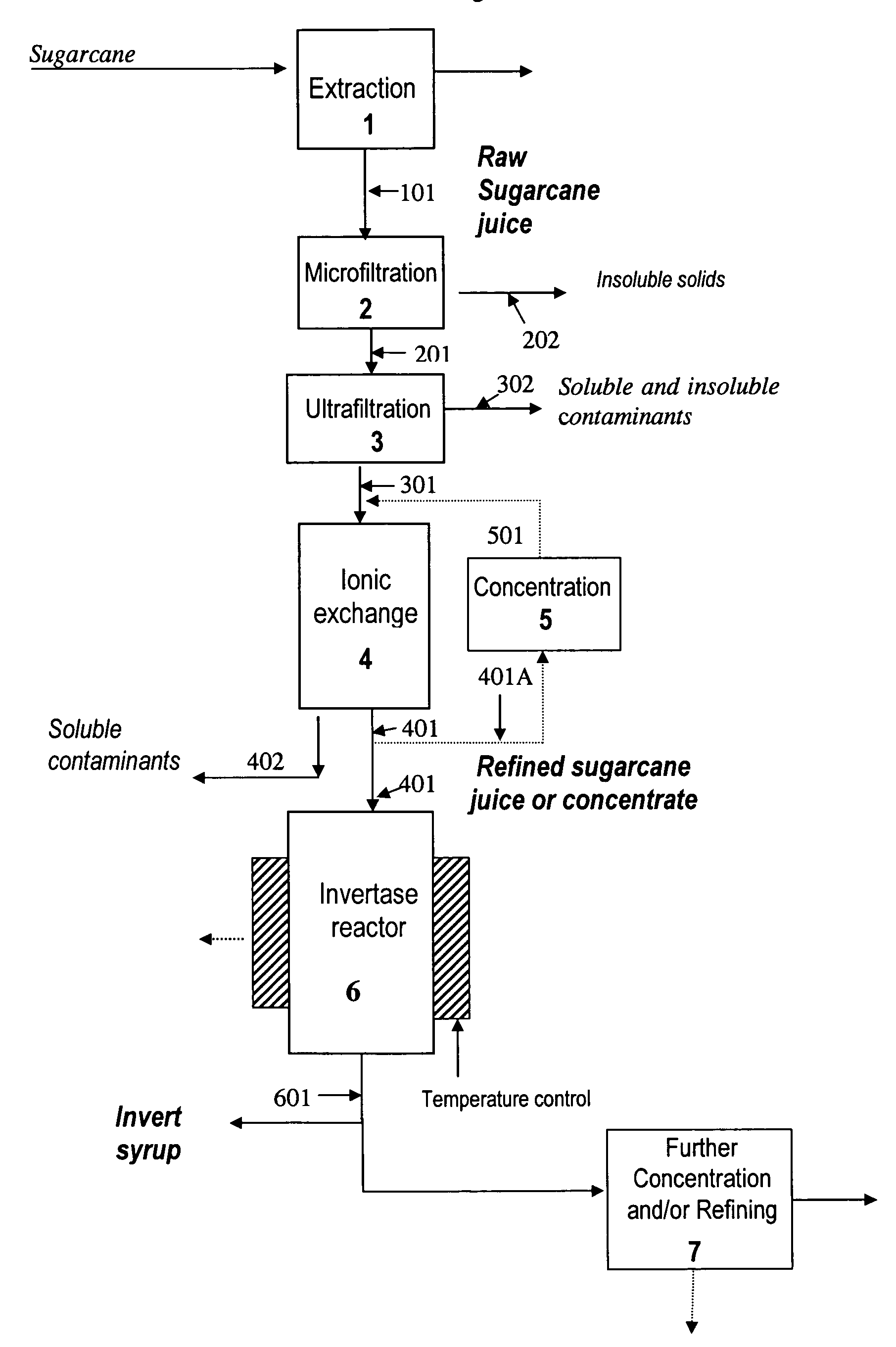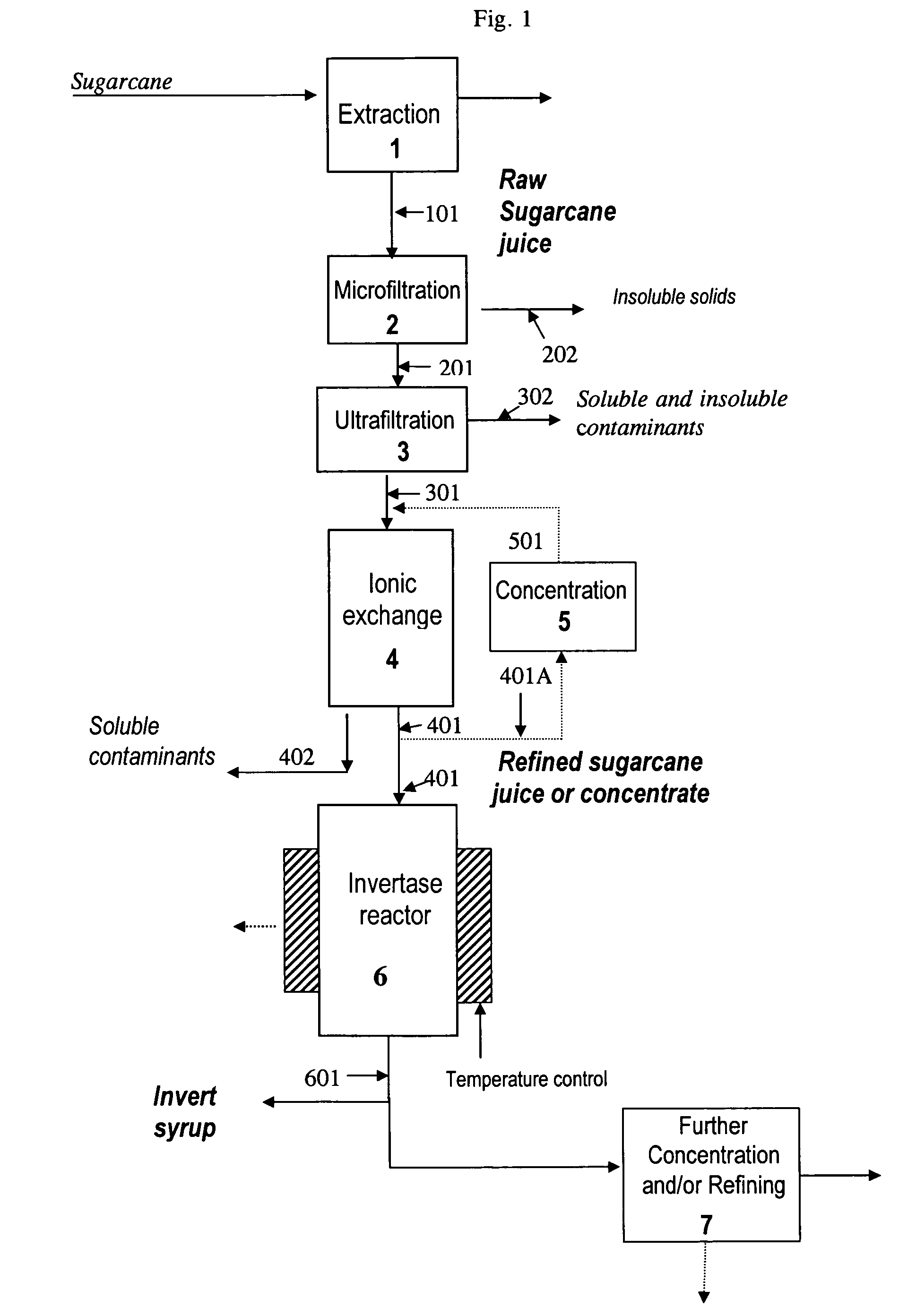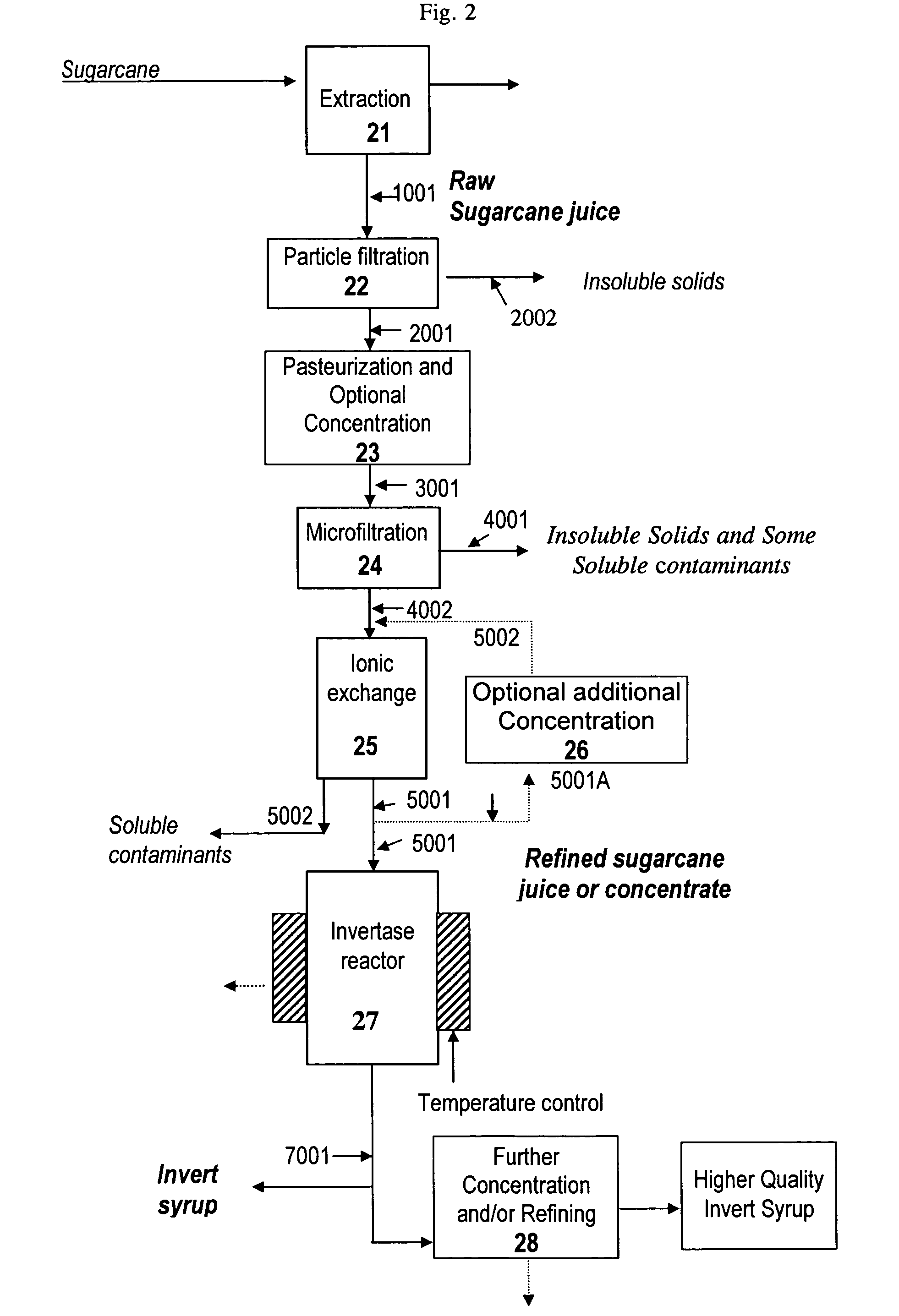Production of invert syrup from sugarcane juice using immobilized invertase
a technology of immobilized invertase and sugarcane juice, which is applied in the direction of sugar derivates, lactose production, food preparation, etc., can solve the problems of insufficient preparation of conventional treatment, reduced production life, and financial pressure on the industry, and achieves economic benefits on a large scale
- Summary
- Abstract
- Description
- Claims
- Application Information
AI Technical Summary
Benefits of technology
Problems solved by technology
Method used
Image
Examples
example 1
[0038]With particular reference to FIG. 1, sugarcane was extracted using conventional techniques in extraction stage 1. The raw extract 101 (characteristics shown in Table 1) at a flowrate of 12.0 L / hr was passed through a Quick Stan Benchtop system containing a microfiltration unit (2 in FIG. 1) manufactured by A / G Technology model no. QSM-04SAP equipped with a 0.2 μm filtration membrane under a max 30 psi pressure drop conditions to yield a microfiltered sugarcane juice 201 having characteristics illustrated in the second column of Table 1. The contaminants 202 were mostly proteins, peptides, phenolics and other colored compounds. Microfiltered juice 201 was then subjected to ultrafiltration using a unit manufactured by A / G Technology, model no. QSM-04SAP (3 in FIG. 1) under a max 30 psi pressure drop conditions to yield ultrafiltered sugarcane juice 301. The contaminants 302 were mostly proteins, peptides, phenolics and other colored compounds. The ultrafiltered juice 301 was the...
example 2
[0041]Invertase (Grade VII, Catalog number I 4504, Sigma Aldrich, St. Louis, Mo.) was immobilized by simple adsorption on chitosan beads (Chitopearl BCW 3505, Wako Chemicals USA, Inc.). The bead size was 350-390 μm and had an ionic exchange capacity of 0.2-0.3 meg / ml with a specific surface of 150-200 m2 / g. The chitosan beads were washed three times with distilled water and a 0.02 M sodium acetate solution (pH 4.5). The invertase was added to the chitosan beads at approximately 2,000 enzymatic units / g beads and the resulting suspension was kept under agitation for 60 min at room temperature. The solution was filtered and the chitosan beads containing the immobilized invertase were washed once with a 0.02 M sodium acetate solution (pH 4.5).
[0042]The enzyme material immobilized on chitosan beads was used to pack a 20 cm long jacketed column (Type XK-16 Pharmacia) with an internal diameter of 16 mm. The length of the immobilized enzyme support system was adjusted to 120 mm. Zirconium b...
example 3
[0043]This Example is a batch wise simulation of a continuous process of an alternative preferred embodiment of the present invention. With particular reference to FIG. 2, sugarcane was extracted using conventional techniques in extraction stage 21. In first filtration stage 22, the raw extract 1001 having characteristics as shown in Table 2 was first passed through a sieve No. 100 (100 mesh) at ambient pressure. Relatively coarse solid contaminants 2002 were collected by the filter and discarded. The first-filtered juice 2001 is first pasteurized in step 23 at 61.5° C. for 0.5 hours (or at a higher temperature, e.g., 72° C. for a shorter time, e.g. 15 sec.) and at the same time evaporatively concentrated to 50° Brix. The pasteurized / concentrated juice 3001 was passed through microfiltration cartridge 24 (2800 cm2, CFP-2E-6A made by Amersham Biosciences Buckinghamshire, UK) and having a membrane with a pore diameter of 0.2 μm equipped with a pump (E-trac WFCHT made by Inverter), ope...
PUM
| Property | Measurement | Unit |
|---|---|---|
| temperature | aaaaa | aaaaa |
| temperature | aaaaa | aaaaa |
| molecular weight | aaaaa | aaaaa |
Abstract
Description
Claims
Application Information
 Login to View More
Login to View More - R&D
- Intellectual Property
- Life Sciences
- Materials
- Tech Scout
- Unparalleled Data Quality
- Higher Quality Content
- 60% Fewer Hallucinations
Browse by: Latest US Patents, China's latest patents, Technical Efficacy Thesaurus, Application Domain, Technology Topic, Popular Technical Reports.
© 2025 PatSnap. All rights reserved.Legal|Privacy policy|Modern Slavery Act Transparency Statement|Sitemap|About US| Contact US: help@patsnap.com



